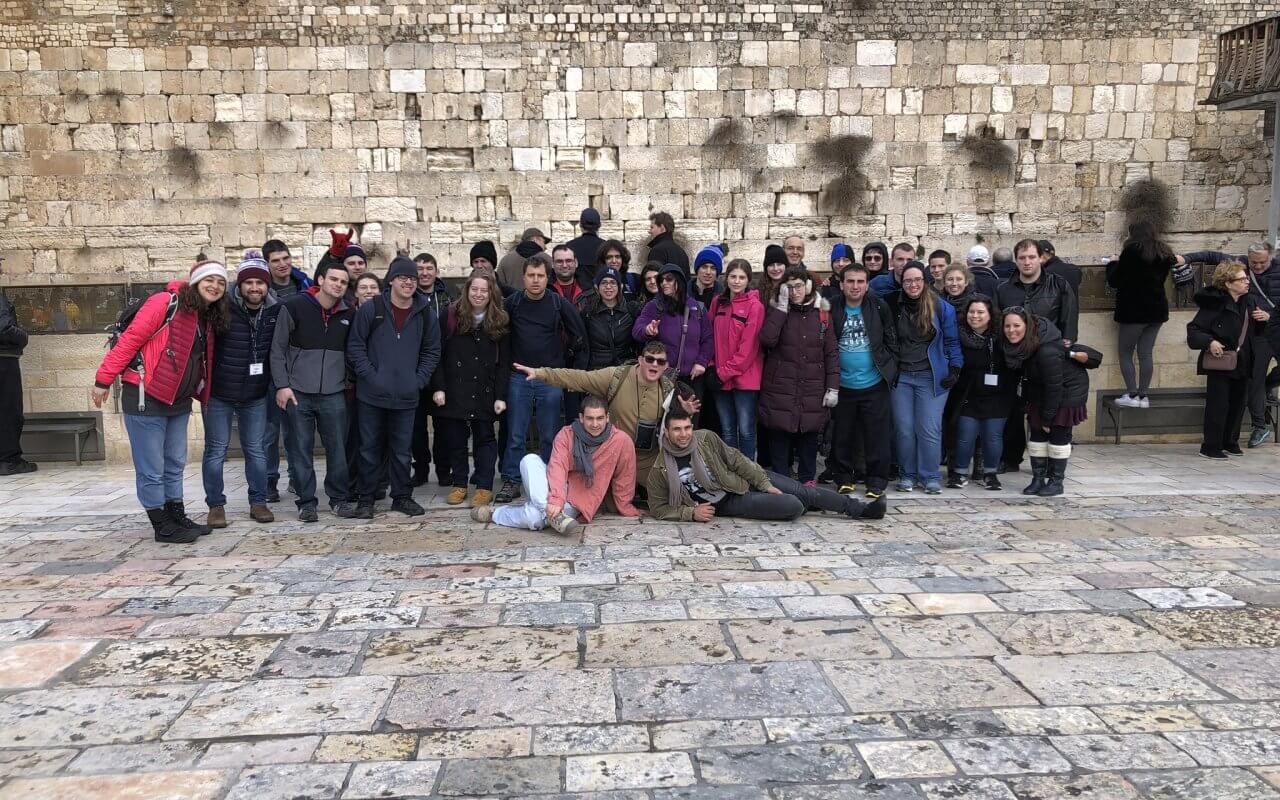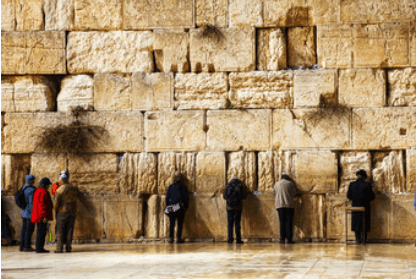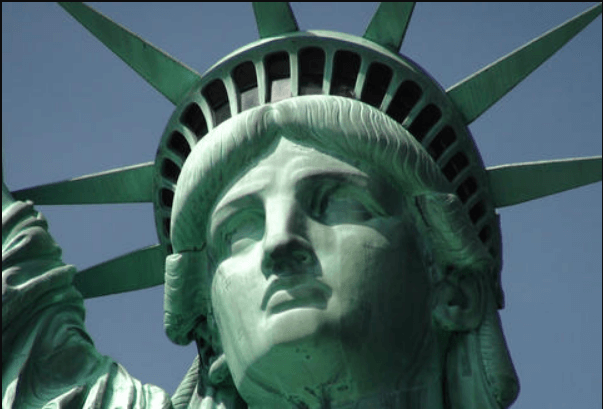As I raced from my home in New Haven to the Manhattan bound Metro North train, enroute to Kosherfest 2006 at the Jacob K. Javits Convention Center, I realized that I first needed a few groceries.
The nearby Stop & Shop in Woodbridge has a nice selection of fresh and frozen kosher foods, so I decided to surprise my children with an Eddies New York City frozen kosher pizza. At the checkout register, the clerk scanned the pie and looked incredulously at the price. $13.49 — that is very expensive, he said.
It is kosher pizza, I explained.
Oh! he said, understanding now.
So began my long road to Kosherfest 2006.
For Menachem Lubinsky, president and CEO of Lubicom Marketing Consulting, Diversified Business Communications, and the entire Kosherfest planning team, the road to the 18th annual kosher food and foodservice trade show begins long before the Nov. 14-15 show. Kosherfest brings together thousands of people involved in every aspect of the kosher food industry. It affords attendees from all around the world an opportunity to interact, explore and sample new products, and conduct business. And it also allows attendees an opportunity to explore new products upstairs at the International Hotel/Motel and Restaurant Show, and to visit booths at both Expo Comida Latina, the Latin food show, and the All Asia Food Show – taking place simultaneously at the Javits Center.
Developing a kosherfest strategy is key. Before arriving at Kosherfest, I had in hand my list of exhibitors and their booth locations. I had also received by email the list of award winners in each category. I would make a note of these locations and be sure to sample these products.
I began my day with the 80 page 2006 Official Show Directory and Buyers Guide. I searched for Connecticut businesses (none in attendance), circled booth numbers of vendors from unusual countries and states (Chile and Australia, Iowa and Montana), and glanced at the names of seminars that I would not have time to attend, including the keynote address State of the Kosher Industry: Whats Next in Kosher Retail Marketing, and a second educational session on The Evolution of Kosher Restaurants. I also noted the locations of booths of people I had previously arranged to meet. The big companies have PR and marketing people who contact journalists prior to the show to arrange meetings. I also noted the sign just past security (where bags and people are searched) that noted that Mincha would take place every half hour.
Kosherfest organizers also called attention to Morris Katz, billed as the world’s fastest painter, who created the largest OU certified
Kosher Soynut Butter & Jelly sandwich, 18 feet long, using 32 pounds of soynut butter, 32 pounds of jelly and 70 pounds of flour.
I started by sampling trans fat-free, chemical-free, real fruit Olivier Bouvai muffins from Montreal. This company offers frozen dough that bakeries and other kosher shops can defrost and bake. An interesting, tasty, new product.
A nearby booth was offering a similar product – Ostreichers All-NaturalChocolate Chip Cookie Dough – though the latter was also Kosher for Passover – and offered 18 ready to bake cookies instead of muffins.
Other nearby neighbors included Near East and Ossies Fish, offering samples of old favorites – rice pilaf, couscous and fish. I smiled but didnt stop to sample the product at the Kosher Heaven booth, offering the only glatt kosher cured beef jerky product on the market.
I quickly walked past booths from various trucking and marketing companies, and for ZEP skin and hand cream.
The friendly, well-dressed man at Classic Raphys Kosher Food encouraged me to stop by and sample his products.
Asher Ohana, the director of marketing and sales and son of founder Raphy, proudly told me how the company has been in business for only five months and already won the Kosherfest 2006 New Product Competition in the Best New Packaging/Design category for their stuffed cabbage. I tasted their delicious cabbage and sampled the absolutely delicious Temptation Kosher Pareve Soy Ice Cream at the booth nearby. I had never found a frozen vegan, pareve product so tasty – and in some of my favorite flavors, including mint chocolate chip, coffee and chocolate chip cookie dough.
It was time for my noon appointment at the Manischewitz booth with well-known cookbook author Susie Fishbein, today demonstrating recipes from her newest cookbook, Kosher By Design Short on Time. The friendly New Jersey mother of four continues to travel the country showing ways to cook simple, aesthetically-pleasing kosher meals. Fishbein is now working on a book designed for people who have cooked and eaten too many of the recipes in her previous books, titled Kosher By Design Lightens Up, which shows readers how to take off pounds!
Fishbein was working at the Manischewitz booth, and David Rossi, the Vice President of Marketing for R.A.B. Foods, was talking to customers and journalists about some of the exciting developments in the company.
We acquired Rokeach Foods, reported Rossi, who then showed me such new products as chocolate covered Tam Tam crackers, a new line of sparkling grape juices, and the Magic Max for Kids products. Parents should be on the lookout for such Magic Max Soups as Chicken & Stars, Chicken & Noodle Os and Chicken & Alef Bet to hit the shelves soon. I cant wait to cook with their new Hebrew Alef-Bet Macaroni.
Shabtai Gourmets owner, Cindy Fern Itzkowitx, and her Cinderella-claddaughter were proudly giving out samples of their Bell Ring Cake, voted Best New Passover Product, under their Cinderella Sweets Line. Shabtai Gourmet is a Jewish holiday bakery line specializing in gourmet, kosher for Passover cakes and cookies.
The Golds booth proudly displayed old and new products. According to Marc Gold, the fifth generation company, best known for its horseradish and borsht, was established in 1932. The company has evolved over the years, now carrying such products as duck sauce, salsa, a full-line of mustards, ketchups and barbecue sauces, and Hungarian cabbage.
Empire Kosher Poultry had several huge booths, proudly displaying their new and old products, which include deli meats, frozen foods, appetizers and hours doeuvres, etc. Elie Rosenfeld of Joseph Jacobs Advertising, proudly showed me the new hologram packaging soon to hit the stores, which, in light of the recent Monsey kosher poultry scandal, will guarantee kashrut of poultry.
While it is always a pleasure to see the older companies that anchor the kosher food industry in attendance alive and well, it is a treat to see new companies bringing products to market. Healthy products sampled included Sadaf (humus mix, couscous and stuffed vine leaves), Bruno (pareve and vegetarian products – I loved the lasagna Florentine), and various veggie burgers in the Dr. Praegers Sensible Foods line.
Jill Ginsberg, the founder and president of Thou Shalt Snack, which started in May 2005, was giving out samples of her Latke Crisps – original and sour cram and onion flavor – which she called, The Worlds First Latke Snack. They are all natural, low in fat, and have zero trans fat.
Najlas Inc. of Lousville, Kentucky, the winner in the Best New Snack Food category, was giving out samples of their Gone Nuts! product.
What sets it apart is the flavor, said Charles Asward, the marketing director. Other Najlas products include such cookies as classic chocolate chunk and oatmeal dried cherry white chocolate chunk.
Stephanie Schandler, president of Lettuce In Love, was at her booth with her mother and husband, proudly showing off her healthy line of ranch, skinny Italian, sweet balsamic and thousand island dressings. The individually packaged dressing cups with their beautiful packaging can be found at Whole Foods and Fairways stores and, according to Schandler, are Dressings so good youll want to drink them!
My Family Farm was back showing their crackers and cookies which use all organic products.
My wife started this company after she noticed the junk food kids were eating in schools, reported Tom Bennett, who also serves as the companys chief financial officer. Kosher certification was just one more sign of quality.
I was pleased to see a number of kosher cheese companies, from Royal George Cheese from Britain (with Cheddar, Double Gloucester and Red Leicester), to Oneg Kosher Gourmet from Shiller Park, Ill., (with Mozzarella, Cheddar, Muenster, Gouda and oven smoked Mozzarella, Cheddar and Gouda), to Joseph Farms of California. Dick Witter, the director of sales for Joseph Farms, noted that they carry more than 40 kosher items, and what makes their company unique is that they do not use artificial hormones. That is unusual for an operation our size, reported Witter, who is proud of the fact that the company, owned by Joseph Gallo of the famous Gallo wine family, is also kosher. We want the public to know how important quality is to us – we dont use artificial hormones, and we also became kosher – it tells our customers that we have outside supervision.
As my time at Kosherfest drew to a close, I reflected on companies doing new things to old products. What can you do to gefilte fish? The A & B Company, using the motto The Way Grandma Made It, is still making gefilte fish, but is now selling Salmon Franks. Their motto says, If you love salmon, you’ll love these franks. Better than hot dogs..and better for you. Im curious to see the market for this product.
And I am confident that Joshua Auerbach and David Raphael, president and CEO respectively, of The Black and White Cookie Company, have the right idea with their extensive line of black and white cookies. We took an 80 year old recipe, we use all natural products, and no coloring, and we make it all from scratch, reported Auerbach. The two young men are happy to tell you of the recent shipment of black and red cookies – to the Miami Heat!



